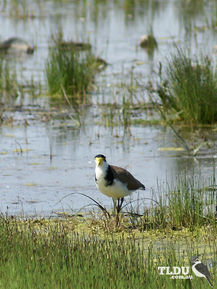
Shoppers Feedback:
Jan 17, 2017
Hello Ros,
I have now paid the invoice, but I would like to write to you just to say a big THANK YOU for getting me the Penguin!
The ChatterMate Penguin became a nice memory for me when I was in New Zealand, and I am so greatful to you for arranging so that I could have it! :-)
Thank you so much!!!!!!!!!!!
Regards,
Malin
Hi Ros,
Many thanks for your very kind email. I really appreciate your prompt reply!
I appreciate your advice regarding the decorations and customs. These are a gift for my daughter’s exchange student family so when she returns home on the weekend I will show her and see if she loves them as much as I do!
Thanks so very much again - I am truly grateful for your kind assistance.
Kind Regards
Bernadette
Ros,
Thanks again for the great customer service. It's a refreshing change!
Best regards,
Trevor
Hey Roz,
Thank you for your emails. Just loved my first order. The cute little Aussie bush critters are going to be used for an office Christmas decoration. My colleagues also liked them and talked about making an order to your site. I'll send you a photo when completed.
I'll be ordering more to send to my daughter's host family in America.
Fabulous service from you.
Kind regards,
Michelle
Thankyou. Order arrived today. One very happy grandson with his new beastly binoculars.
Regards,
Irene
- Home
- Wild Wonders
- Shop
- Aromas of Australia
- Australian Made
- Books
- Book Marks
- Christmas Decoration Sale
- Christmas Decorations
- Clocks
- Drink Holders
- Garden & Outdoor
- Gift Wrapping & Cards
- Home & Giftware
- Jewellery
- Keyrings
- New Products
- Pencils & Pen Holders
- Photo Frames
- Plush Toys
- Plush with Sound
- Sheepskin Rugs
- Stationery
- Stone Carvings
- Toys & Games
- Travel Goods
- Wedding
- Wild Figurines
- Wildlife Safety Products
- Wind Chimes
- Wine Charms
- View All Products
- Wildlife
- Australiana
- Explore
- Contact Us
Masked Lapwing

Quick Facts
| Length: | 38 cm |
| Height: | - |
| Weight: | - |
| Colour: | - |
| Habitat: | Marshes, mudflats, beaches and grasslands. Often seen in urban areas |
| Food: | Insects and their larvae and earthworms |
| Predators: | - |
| Status: | Secure in all states and territories in Australia |
Masked Lapwings are large, ground-dwelling birds that are closely related to the waders. The Masked Lapwing is mainly white below, with brown wings and back and a black crown. Birds have large yellow wattles covering the face, and are equipped with a thorny spur that projects from the wrist on each wing. The spur is yellow with a black tip. The Masked Lapwing has two subspecies resident in Australia. The southern subspecies has black on the hind neck and sides of breast, and has smaller facial wattles. Northern birds are smaller, without the partial black collar, but have a much larger wattle, which covers most of the side of the face. The sexes are similar in both subspecies, although the male tends to have a larger spur. Young Masked Lapwings are similar to the adult birds, but may have a darker back. The wing spur and facial wattles are either absent or smaller in size. The southern subspecies is also known as the Spur-winged Plover.
The Banded Lapwing, is much smaller (25 cm to 29 cm). It has a mostly black head and upper breast, with a distinct white eyestripe and bib. It also has a distinctive red patch at the base of the bill.
The Masked Lapwing is common throughout northern, central and eastern Australia.
The Masked Lapwing inhabits marshes, mudflats, beaches and grasslands. It is often seen in urban areas. Where this bird is used to human presence, it may tolerate close proximity; otherwise it is very wary of people, and seldom allows close approach.
Masked Lapwings feed on insects and their larvae, and earthworms. Most food is obtained from just below the surface of the ground, but some may also be taken above the surface. Birds are normally seen feeding alone, in pairs or in small groups.
Masked Lapwings may breed when conditions are suitable. Both sexes share the building of the nest, which is a simple scrape in the ground away from ground cover. This nest is often placed in inappropriate locations, such as school playing fields or the roofs of buildings. Both sexes also incubate the eggs and care for the young birds. The young birds are born with a full covering of down and are able to leave the nest and feed themselves a few hours after hatching.
The Masked Lapwing is notorious for its defence of its nesting site. This is particularly the case after the chicks have hatched. Adults will dive on intruders, or act as though they have a broken wing in an attempt to lure the intruder away from the nest.
Last Updated: Thursday 9th January, 2014
BirdLife Australia - www.birdlife.org.au
BUSH e-TELEGRAPH
Signup for our monthly newsletter the "e-Telegraph"
Quick Links
Home | The Beginning | About The Land Down Under | Wild Wonders | Advertise on Wild Wonders | Christmas Decoration Sale | Christmas Tree Decorations | Drink Holders | Plush with Sound | Stone Carvings | Wildlife Wine Charms | Freebies | Australian Wildlife | Help Our Wildlife | Australiana | Photo of the Month | Explore The Land Down Under | Contact Us | Legal Notices

